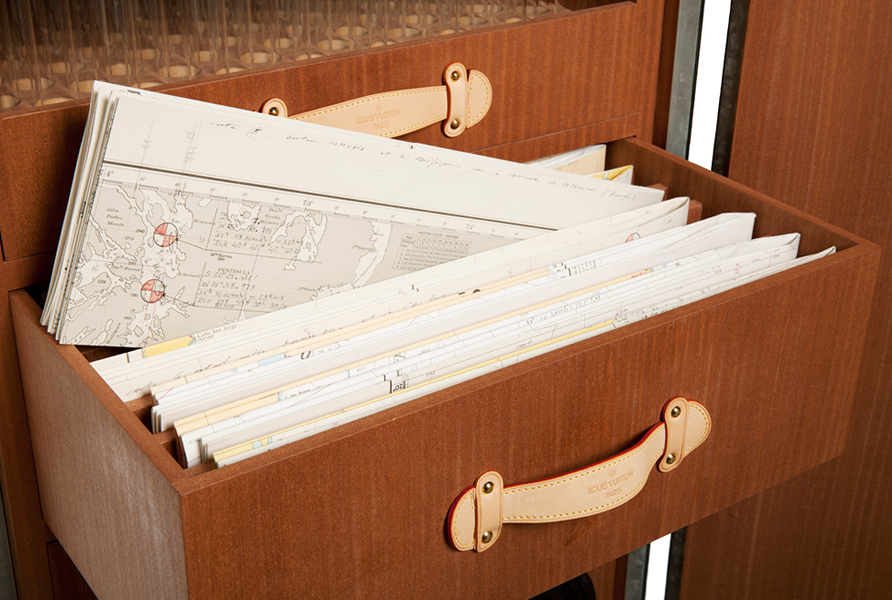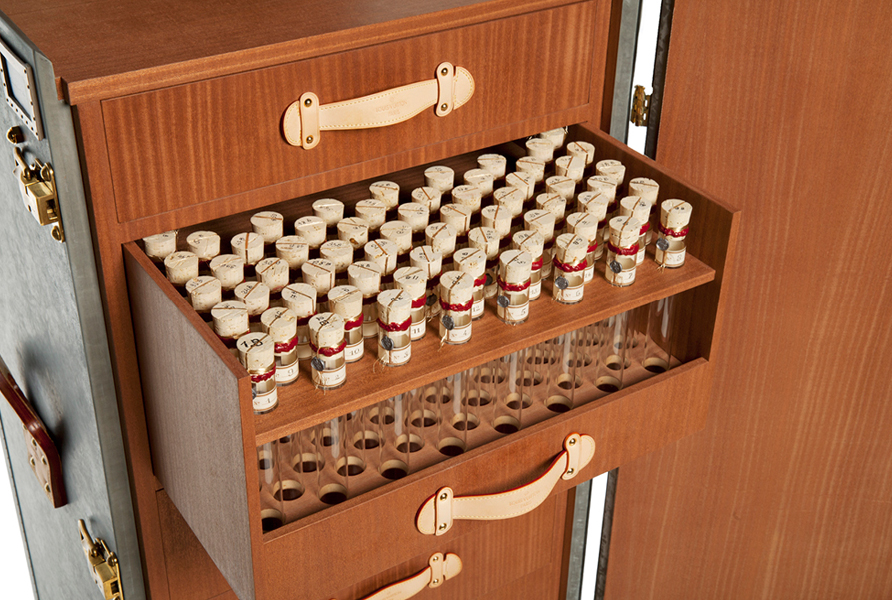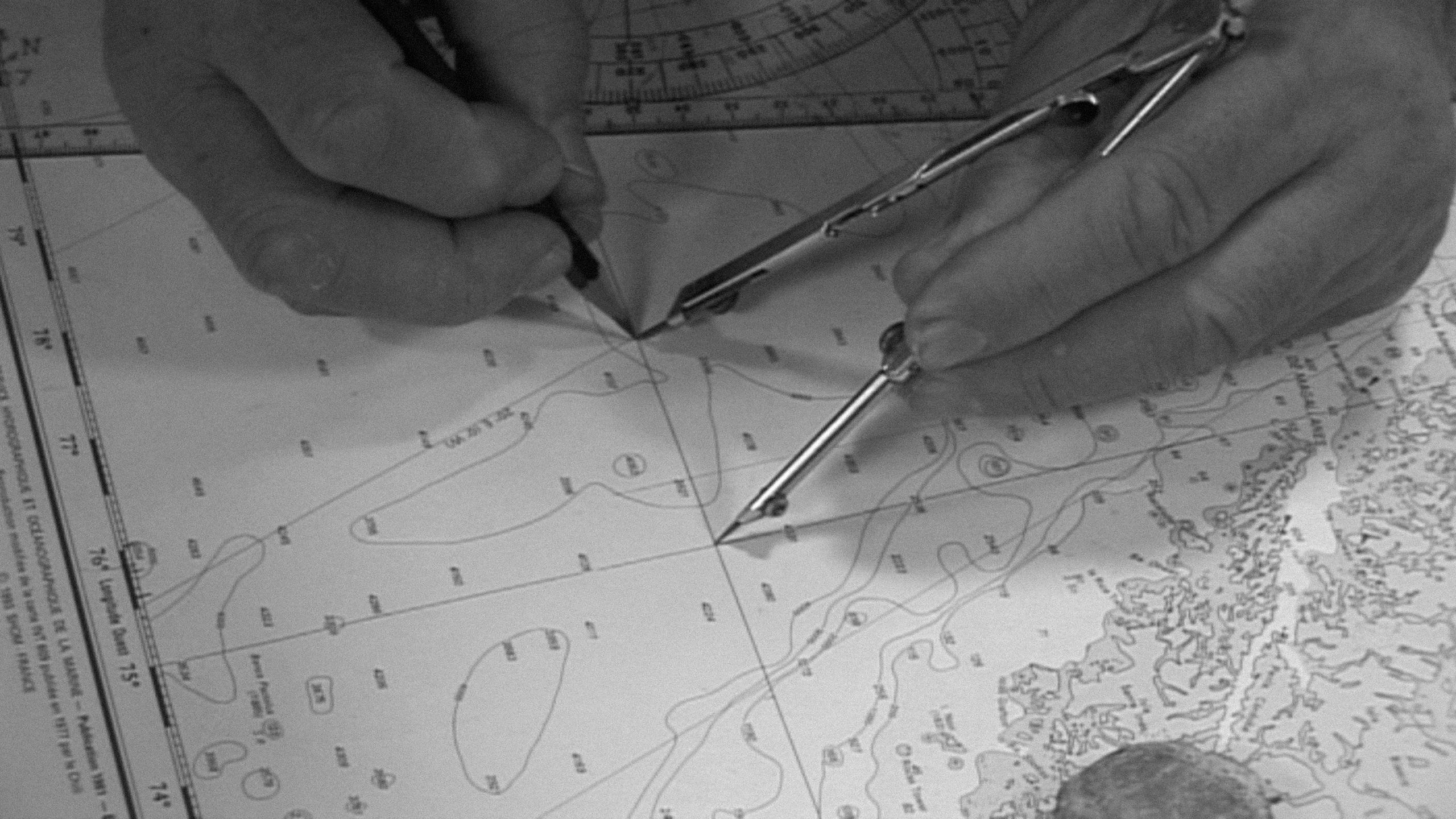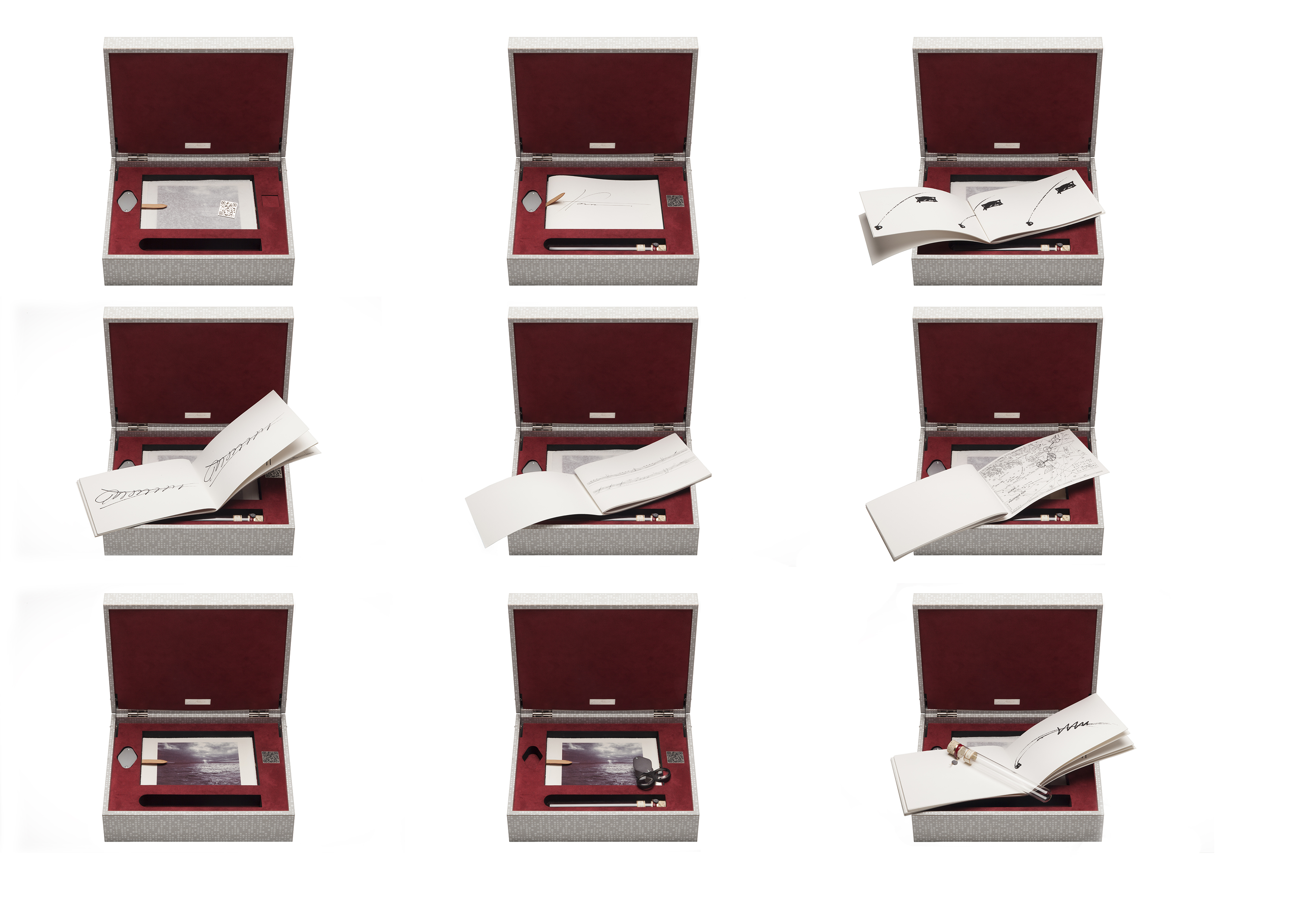
Portrait of Wind , trunk display
La malle du Vent. Portrait du Vent, 2012

Jean Larivière and his anemometer Richard on the Jeanne d’Arc, 2010
The Aeolian harp is a stringed instrument played by the wind
without the need for human intervention.
The intensity of the vibrations of the air,
and the shape and structure of the harp, determine the sonic variations emitted by the instrument.
From Rio de Janeiro to Valparaiso, passing through Cape Horn, for five weeks aboard
the “Jeanne d’Arc” helicopter carrier,
the Portrait of Wind was produced by recording sixty-two different winds.
 Portrait of Wind, detail of the first drawer,
Portrait of Wind, detail of the first drawer, Richard anemometer, magnifying glass, Cape Horn printed in platinum, 2012

Portrait of Wind, detail of the third drawer, cards, 2012

Portrait of Wind, detail of the second drawer, proofs containing the winds, 2012
The Portrait of Wind is contained in an interactive vertical trunk.
The trunk lid is a touchscreen displaying an electronic map retracing “ the wind-hunting journey ”.
By interacting with the screen, the viewer can move from point to point and listen to the corresponding sound of the wind.
In the upper drawer of the trunk is a leaflet drawn in pen and pencil describing the adventure, and a Richard anemometer, an instrument that measures windspeed.

Jean reports his trip on a map aboard the Jeanne d'Arc, 2010
The sound of the wind through the Aeolian harp was captured with a Nagra at the exact moment when it entered the glass test tube.
Blocked with a cork stopper, these contain wind from some of the most hostile places on Earth: from the Roaring Forties to the Furious Fifties.
Each sound recording was taken using
a GPS so that the artist could reconstruct
a map of the wind route.
Under the leaflet is a platinum print taken when passing Cape Horn, and a magnifying glass that allows one to explore the grain and material of the print.
In the second drawer there are the sixty-two glass tubes containing wind, and hand-annotated maps.
A sound system integrated into the trunk makes it possible to listen to the wind symphony, composed of all the sounds produced by the Aeolian harps in contact with the wind throughout the journey.

Jean draws a preparatory sketch for the manufacture of the trunk, 2011
Portrait of Wind, teaser, 2012

Jean reports his trip on a map aboard the Jeanne d'Arc, 2010

 Views from the Horn box, portrait d’un vent, 2016
Views from the Horn box, portrait d’un vent, 2016 Horn. Portrait d’un vent, 2016
This is the little sister of the Portrait of Wind.
This briefcase is called
Horn, Portrait of a Wind because
it contains only one test tube,
filled with one wind, and therefore only one sound : that of Cape Horn.
There is also a leaflet with a musical staff representing this sound.
The following 24 pages contain enlargements of each note.
On the last page there is a precise map of Cape Horn where the sound was recorded.
Hidden under the leaflet, you will discover the photograph that was described in Portrait of Wind, but this time printed in gold.
A pocket magnifying glass allows you to again explore
the magnificent material of the print. Thanks to a flash code engraved on the platinum,
you can hear the sound recorded at Cape Horn on your smartphone.

Horn, portrait of a wind, score of the Wind Symphony, 2016

Horn, portrait of a wind, map detail, 2016

Horn, portrait of a wind, note drawn by Jean Larivière, from the symphony of the wind, 2016
︎ All rights reserved © Jean Larivière, 2022